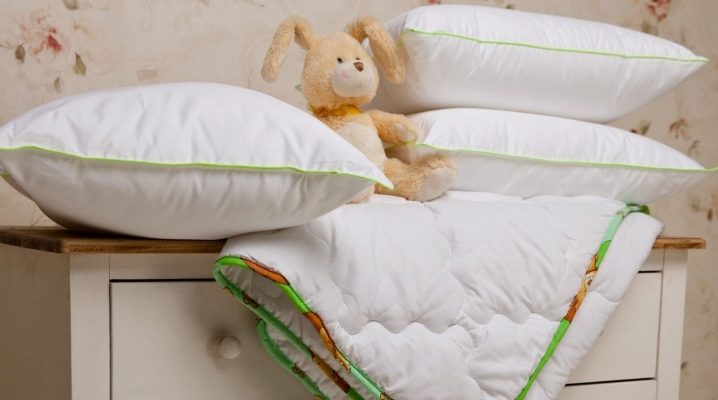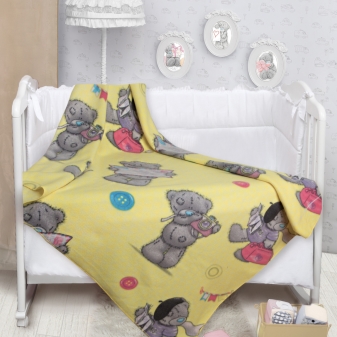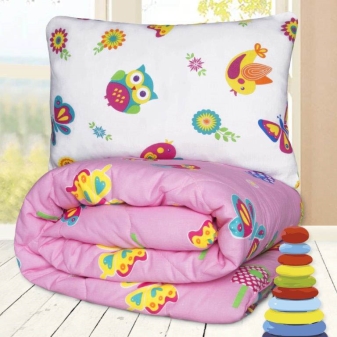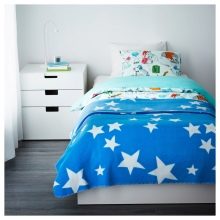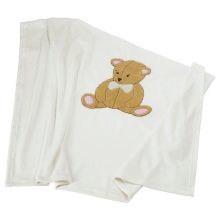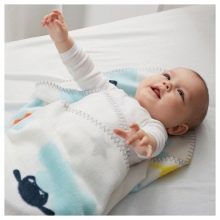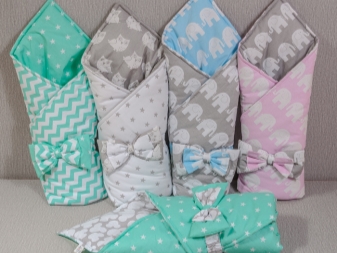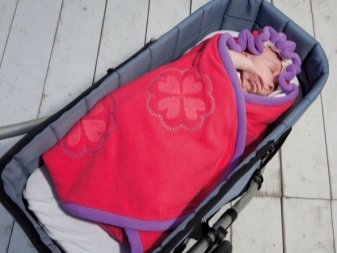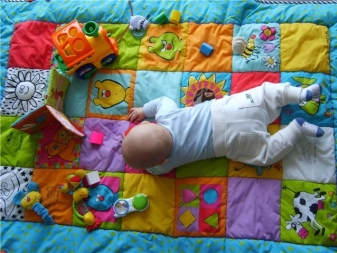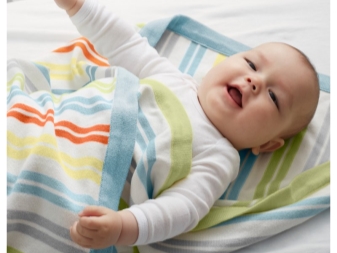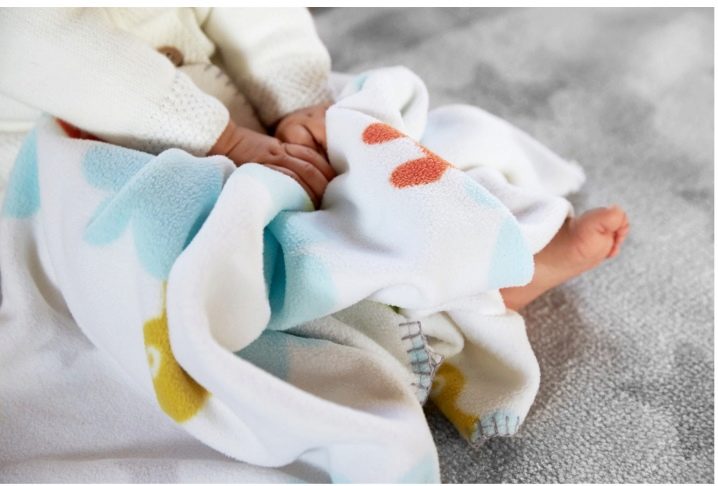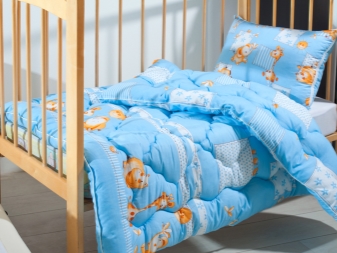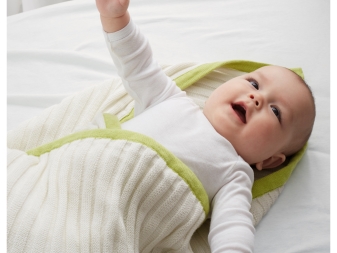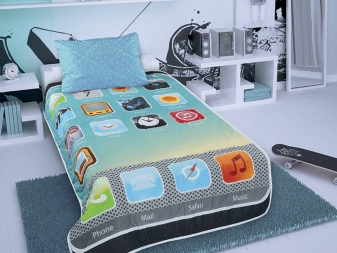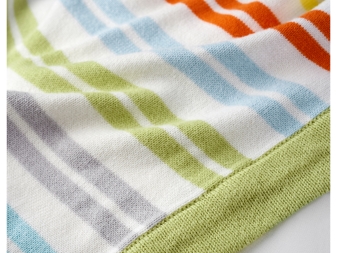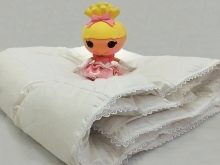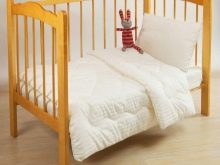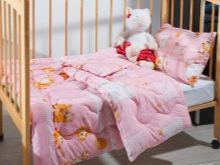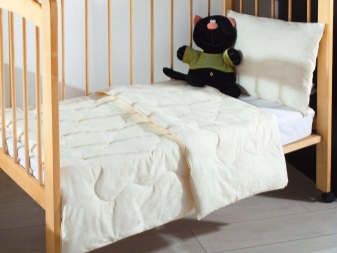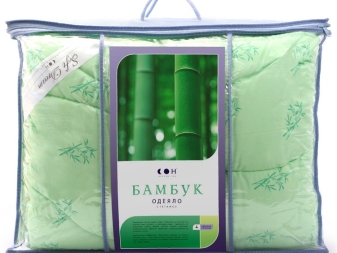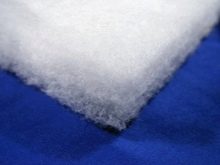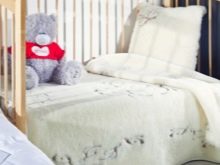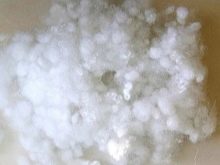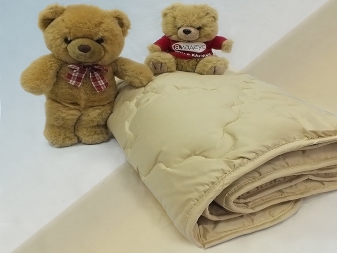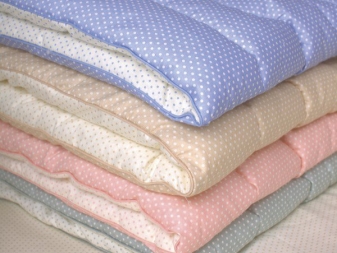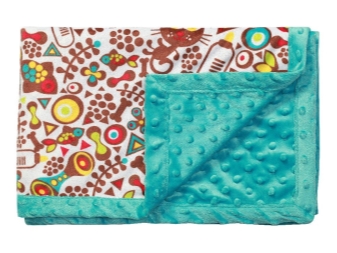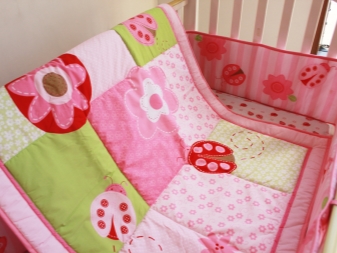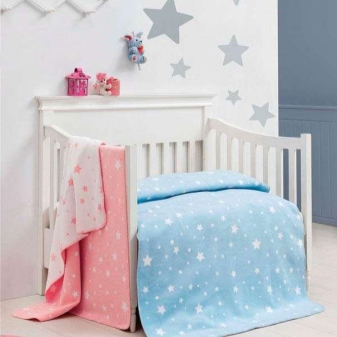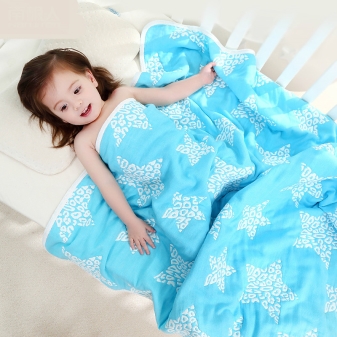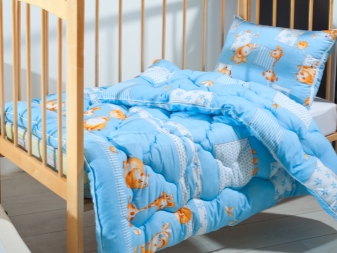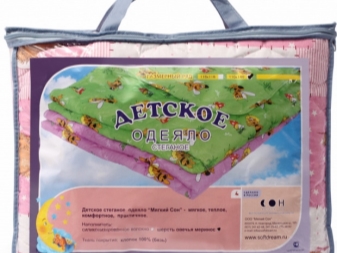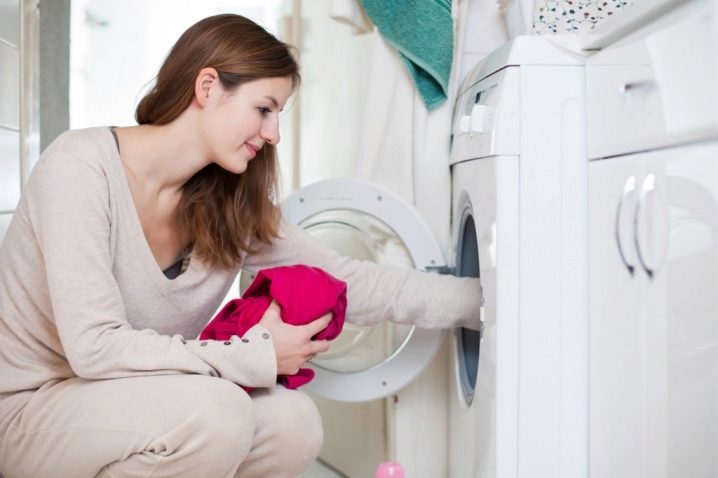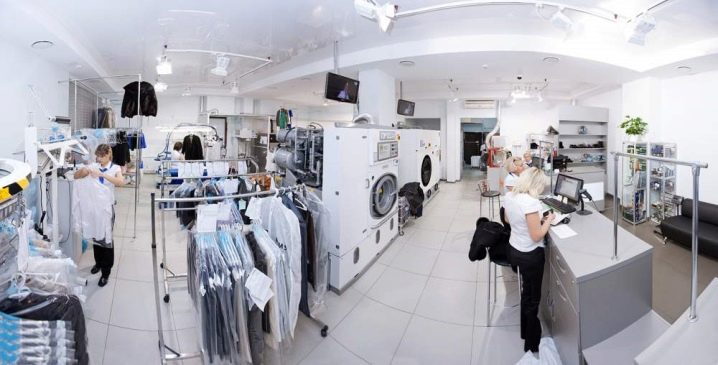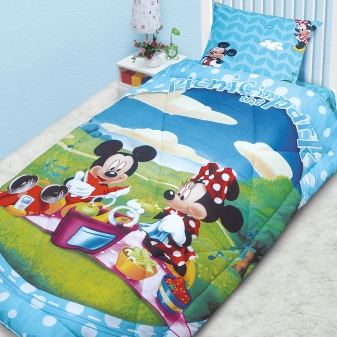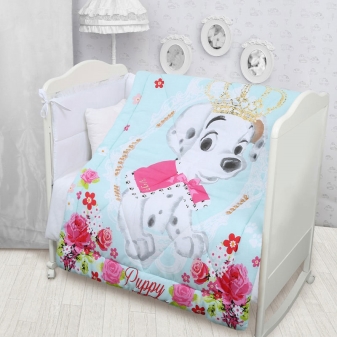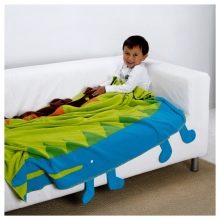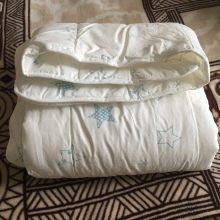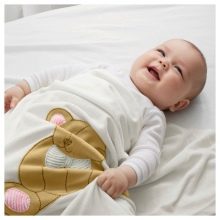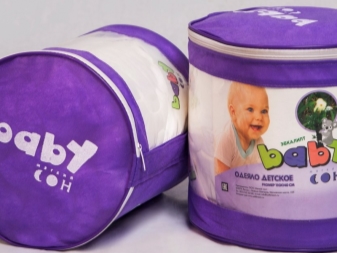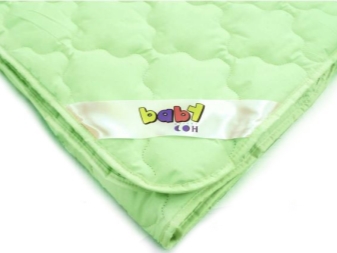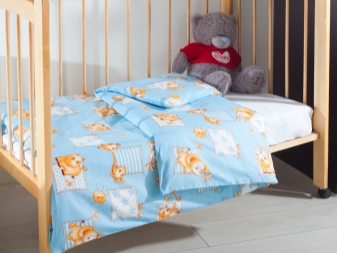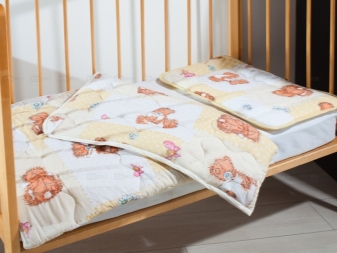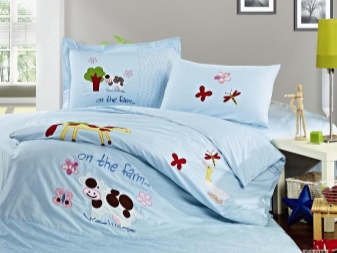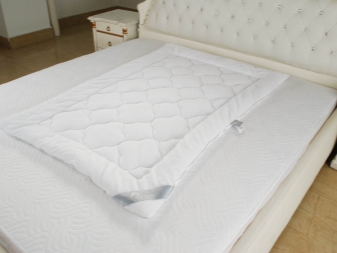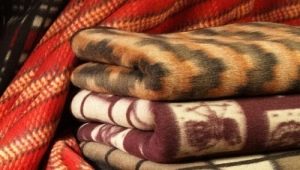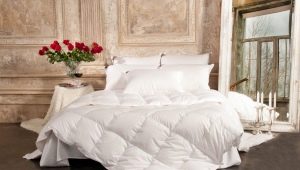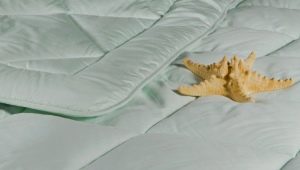Baby blankets
Sleeping accessories are one of the most important items for children. After all, a child spends in a dream up to two-thirds of the day, and it is very important that he feels comfortable and safe. Therefore, it is necessary to take with great responsibility to the choice and purchase of blankets, pillows and bed linen.
Today, the range of children's blankets is huge and to ensure a healthy and healthy rest for your baby, it is recommended to purchase only high-quality and practical accessories. In addition to the composition and appearance of the product, when you purchase, you need to consider three parameters: the child's age, his height and bed size.
Product Requirements
Unlike adults, there are quite high and clear requirements for children's blankets:
- The product filler must be environmentally friendly, hypoallergenic and hygienic.
- Air permeability and thermal conductivity. It is required that the blanket warms at any air temperature, but it does not cause overheating of the child’s body.
- The size. The blanket should be ideally suited to the child in growth.That is to be, no more and no less. Otherwise, there will be problems with sleep and comfort.
- It is necessary that the bedding quickly absorbs and evaporates moisture, without accumulating odors.
- It would be ideal if the product washes well and dries quickly.
- The blanket should be light but warm.
- Separately, it is worth noting the blanket cover. It is necessary that it be stitched from high-quality natural fabric with strong seams through which the filler cannot make its way out.
Scope of application
Any baby blanket has a wide scope:
- Bedding can be used in the stroller during the cold season, covering the baby.
- At discharge from the hospital, many use convenient and practical transformers blankets. Very often, the transformer is called an envelope for a newborn.
- Various blankets can be spread out on the cold floor while playing with the baby.
- And, of course, the most common option is a blanket in the crib. Now in stores there is a large selection of various products for children. For example, the most unusual and original - a sleeping bag, which will not allow at night to unwind and freeze.
Classification by size
Many parents do not pay special attention to the size of the blanket, considering that it does not matter. After all, today most people care about how the bedding will fit into the interior of the children's room. But in fact, too large or small blankets will deliver the child only the inconvenience.
If the bedding is too large, then they start to clump up, take up a lot of space and interfere with healthy sleep. If, on the contrary, are small, then the child will constantly unwind and freeze.
Blankets can be classified by size:
- Standard. Manufacturers produce blankets in three standard sizes: 110x140, 100x135 and 60x120 centimeters. These sizes are easy to use and convenient in that duvet covers on blankets can be purchased at every store bedding. It is enough to know their parameters. One of the most common sizes today is a 110 to 140 blanket. Parameters can be considered versatile, because you can make such a blanket a bed, wrap the baby, place it on the floor or put it in a stroller.
- Square. Most often, these models are bilateral and are designed for children up to a year. The complexity of the square blanket lies in the size of the duvet cover. It is not always possible to find bedding of the corresponding parameter in the shops and many parents have to sew it themselves.
On the other hand, a compact blanket is perfect for strollers during bad weather.
It will warm and does not take up much space. Older children up to adolescence can buy a single blanket. Universal sizes for preschoolers are: 110x140 and 140x140 centimeters. And for the guys who are already studying, you need to choose a product with the size: 140x205, 150x200, 160x210 centimeters.
Types of materials: advantages and disadvantages
Quality blankets are made from natural materials that are carefully processed. But it also happens that a child is born with an allergy to natural fillers, therefore it is just the way, synthetic or mixed materials will do.
Natural
By natural blankets include the following:
- Downy products considered the highest quality and meet all standard requirements.However, fluff can cause allergies in babies. And this filler is not easy to care for. In order not to deform the blanket, it is necessary to wash it in an automatic typewriter on a delicate mode, without pressing and with soft means. In addition, the fluff is dried for a very long time. Pooh requires special attention to itself, as it often leads to ticks when used improperly. Apply a blanket only in winter.
- Wool. Of the advantages we can highlight the fact that the wool models are very warm, dense, moisture-proof and breathable. They have a beneficial effect on the joints and blood circulation. For these blankets do not need special care, as the wool is known for the ability to self-clean. A blanket is considered an excellent option in winter or spring. But it is necessary to use it only when the baby is not allergic to natural material. For example, warm jacquard rugs with colored patterns will attract the baby and have a healing effect on the body. The blanket is produced in two versions: a woven rug and models with a woolen filler. Bedding with a filler made of wool are used only in winter, and woven patterns can cover a child all year round.
The most common blanket for children is camel.Wool of this animal has healing properties. In second place are the most popular blankets, consisting of alpaca wool and sheep. They are quite light, weightless, but at the same time warm.
- Cotton. Products made from different cotton fabrics also meet all standard criteria. These blankets can be thin or warm, designed for any season. It is worth noting that it is not recommended to purchase cotton quilts. As they absorb smells and moisture very well and at the same time do not promote air circulation. Cotton models are very difficult to use and maintain. These blankets are deformed over time: the filler is knocked into clumps and the already poor air permeability becomes even worse.
- Silk and bamboo. These natural materials are perfect in their qualities. They are easy to care for and difficult to spoil. Bamboo and silk blankets warm in the winter nights and create a pleasant coolness in summer, that is, they always maintain the microclimate needed by the child. Bamboo is considered an excellent bactericidal and hygienic material, whose properties are retained even after 50 washes.A quality silk, in turn, has the strength and durability to use. It is pleasant to the body. The only minus of silk is a rather high cost.
Synthetic
Almost all bedding made of synthetic materials are light, warm and easy to clean. In addition, the cost of synthetics is several times less than natural filler:
- Sintepon. Synthetics primarily attracts with its low price, but it is worth considering that the material brings a lot of inconvenience. For example, padding blankets practically do not let the air through. As a result, the baby’s skin stops breathing and he begins to sweat a lot.
- Holofiber and ecofiber - This is an alternative replacement for duvets, if the child is allergic to the natural composition. The materials retain heat well, but allow air to circulate. Designed such blankets only for the winter season.
- Fleece or plush blanket is very durable, dense, comfortable and soft. These are some of the most popular materials in the world, which have many advantages. Fleece is unpretentious in operation, durable, quite warm and hypoallergenic.
Seasonality
It is best to purchase one blanket for each season. Thus, you can avoid discomfort, overheating and other inconveniences. Seasonal blankets are divided into:
- Winter This is a dense, warm product that will not allow a child to freeze at a low temperature. Winter models are wool, cotton, synthetic.
- Summer Light, thin knitted blanket with a variety of natural fillers. The main task of the summer cover is to quickly absorb moisture and maintain an optimal microclimate.
- Two way. Such bedding consists of two different materials on each side. They can be used both in winter and summer.
- Blanket "Four Seasons". Such bedding judging by the name can be used all year round. The versatility of the product lies in the fabric of the additional part, which is attached to the buttons. In the warm season, it can be detached and applied separately.
What to look for when choosing?
Before buying a baby blanket, you need to sort through all the criteria and decide which is best to choose, which product is ideal for the baby. Undoubtedly, the first thing you should pay attention to is convenience and comfort. The child should have a full sleep and bedding should not interfere with this.
Criterias of choice:
- Season of the year. Winter blanket is thick, dense and heavy, and summer or off-season, on the contrary, light, thin and small.
- The weight of the blanket. A small child is too massive a blanket will bring only discomfort and inconvenience. Therefore, the weight of the models must be selected, starting from the age and body of the baby.
- Materials Natural fillers are often sources of allergic reactions in children. For example, camel hair is considered to be tough, it can irritate the mucous membranes of the mouth, eyes, nose and delicate baby skin. But synthetic fillers practically do not contribute to allergies and have greater softness and smoothness. Such qualities are, for example, acrylic, Vitasan and holofiber.
- Airtight. This is one of the most important criteria when choosing a blanket. The child needs regular air circulation, optimal temperature and rapid absorption of sweat. This feature is most inherent in natural materials.If the choice fell on synthetics, then after the purchase, it is necessary to take additional measures to improve the microclimate under the blanket.
- The distribution of the filler. Pooh and cotton wool get stuck with time and roll off, which happens most rarely with synthetic filler. To avoid problems, you must purchase quilts or stitch them yourself.
- Cost It is important to note that a quality and durable product can not be cheap. Therefore, you do not need to save on the comfort and health of the child.
Care rules
A blanket is bedding for daily use and needs to be made so that it lasts as long as possible. For this you need to properly care and carry out prevention. Care is a specific sequence of operations: washing, drying and storage.
The easiest way to keep the blanket fresh is to air it weekly. Each material has its own nuances, which can be learned from experts or by reading the label:
- Synthetic Bed Covers require minimal care compared to natural materials.They are not whimsical at all, and they are recommended to be washed by hand or in an automatic machine every month at a temperature of up to 30 degrees.
- Wool blankets any type can be cleaned only by hand at a water temperature of not more than 30 degrees. It is best to use special tools or hair shampoo. There are exceptions. For example, experts recommend to treat cashmere more carefully and give it to dry cleaning. The same applies to merino wool.
- Silk accessories, if they are not white, do not need regular cleaning. They need to be dry cleaned to specialists only once a year. For prevention, the blanket can be periodically shaken and ventilated.
- Bamboo blankets the most unpretentious of all natural materials. They can be simply vacuumed from time to time or given to dry cleaning. For prophylaxis it is necessary to ventilate products at least once a year.
It should be noted that the complete absence of any care for children's blankets is unacceptable. Indeed, in a humid and warm microclimate there is a very high probability of the appearance of microorganisms harmful to humans. This is especially dangerous for kids.
Popular manufacturers
Today, on the shelves of shops and on the Internet you can find a huge number of manufacturers of children's blankets. They all differ in quality, processing methods, models, country, prices and other things. In order not to be mistaken in the choice and buy the perfect product for your child You can get acquainted with several leading companies and draw conclusions:
- Mona Liza. One of the most modern and progressive Russian brands, which has been manufacturing home textiles for many years. The company is not inferior to European colleagues in quality and a wide range. Brand Mona Liza has its own newest sewing production and experienced professionals. He exercises strict control over the tailoring and quality of raw materials. Children's blankets of the company meet international standards and are very popular.
- IKEA. Netherlands trademark, which is widespread in Russia. The company has a wide range of quality, comfortable, practical blankets for children at reasonable prices. IKEA strictly monitors the safety and quality of the materials from which the bedding is made.
- Soft sleep The Russian company is equipped with modern equipment, it produces only high-quality blankets and other bedding. Absolutely all products are subject to strict control and pass mandatory and voluntary certification. The main motto of the brand - to meet the expectations of the buyer.
- Primavelle. A modern home textiles company that has been pleasing consumers for fifteen years now. Of the features of the company, one can note the original design, a wide range of children's blankets and the high quality itself.
- Arya. Turkish manufacturer of bedding, including for children. All products are made from natural or synthetic materials and are of high quality. In the Russian market, you can see a wide range of blankets for babies who have passed all certification and are absolutely safe to use.
Read more about baby blankets Gerti from the brand Steinbeck you will learn from the following video.
